Calculating Growing Degree Days
Growing Degree Days (GDDs) can be a helpful tool to track cereal crop growth and development. GDDs are calculated by adding the average daily temperatures during the cereal crop’s growing season. If the daily average temperature is equal to or less than 0˚C, the degree-day value is zero and no GDDs were accumulated for that day.
Using GDDs to Estimate Crop Growth
It takes approximately 100 GDDs for each new leaf to appear on a winter wheat plant, which is a period known as the phyllochron. The environmental conditions at planting plays a role in setting the length of the phyllochron, with early planted wheat generally having a longer GDD requirement than later planted wheat. Once winter wheat emerges, you can begin calculating the number of growing degree days accumulated. For example, if you have calculated there has been an accumulation of 200 GDDs since emergence, winter wheat should be at the two-leaf stage. When wheat reaches the three-leaf stage, tillering will begin. If average daily temperatures are equal to or less than 0˚C, wheat stops growing. The Visual Guide to Winter Wheat Staging is a helpful resource for identifying crop growth stages (Figure 1).
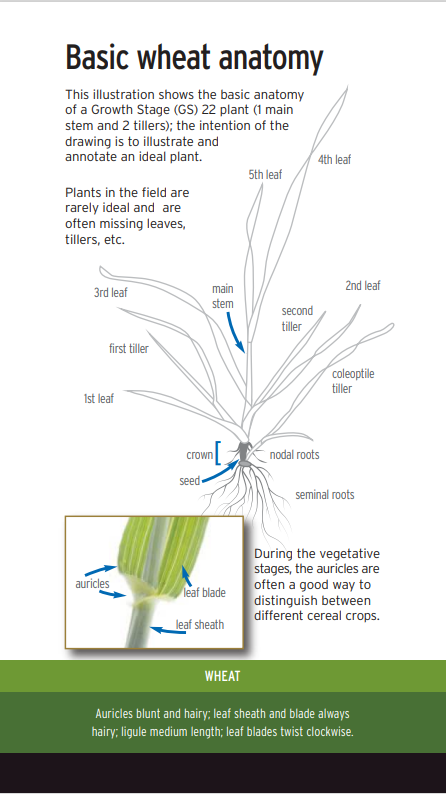
Tracking GDDs during the growing season can be a helpful tool in estimating how quickly the winter wheat crop is moving through the growth stages, equipping producers to make timely fertilizer and crop protection applications. During cooler temperatures GDD accumulations are slow, so the crop will be moving through the growth stages at a slow rate. During warm or hot temperatures, GDDs will accumulate quickly, and the crop will be moving through the growth stages quicker. It is during these warm and hot periods that timely fertilizer and crop applications are often missed.
Breaking Dormancy
In the spring, winter wheat will break dormancy after seven consecutive days of positive GDD accumulations (average daily temperatures above 0˚C). Since January 1, 2024, Growing Degree Day (GDDs) accumulations across Ontario have ranged from 16 in northwestern Ontario to 219 in southwestern Ontario (Figure 2).
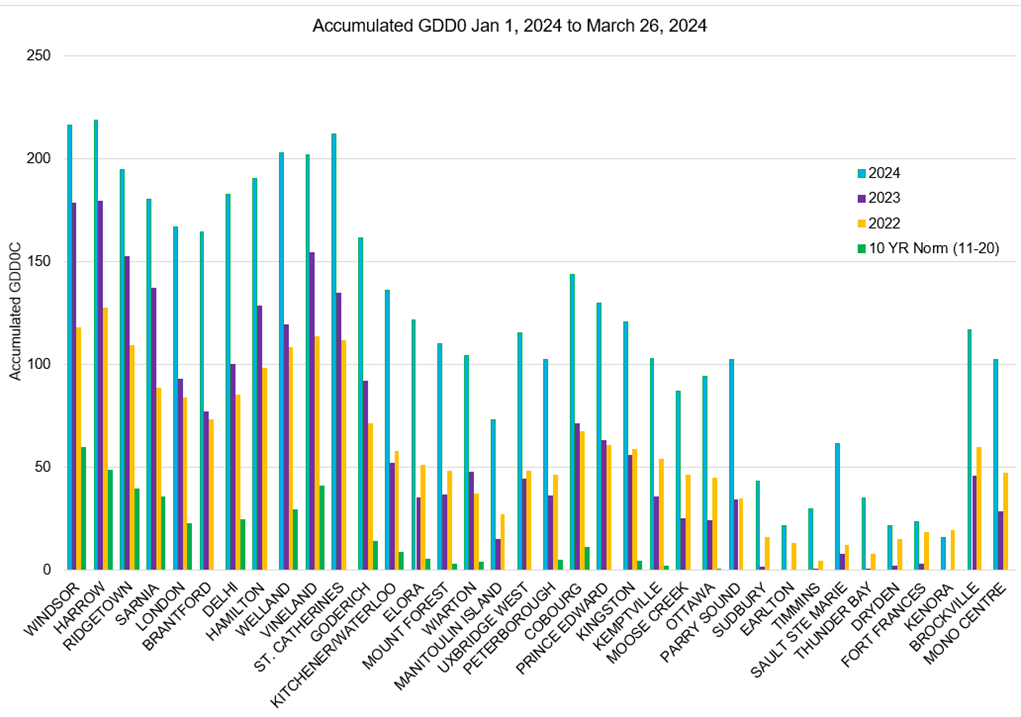
Once fields have broken dormancy, they should be assessed for winter survival. Stand counts should be conducted and crop growth stage determined. To get a fulsome perspective of what is happening in the field, conduct a number of stand counts and plant health assessments throughout the entire field, not just near the field entrance. A stand count of 66 plants per metre of row with 2-3 tillers per plant would result in 750-1000 heads per metre square or 20 plants per foot of row with 2-3 tillers per plant would result in 60-90 heads per square foot. To help distinguish between a tiller and main stem, dig up some plants and identify the growth from a single seed (Figure 3).
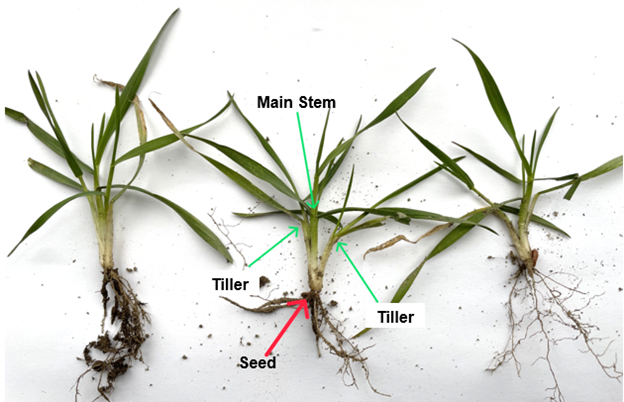
Making Management Decisions Based on Crop Growth Stage
Fields that have been identified with minimal growth and tillering early in the spring tend to benefit from an application of nitrogen (N) and sulphur (S) at green up (Figure 4). This early application helps to maintain and encourage additional tillering. If the first application is held off until later in the spring when plants reach GS30, some tillers may be lost if N is deficient. With an early application at green up, a second application can be made between GS30-32. A single application strategy with all N applied upfront may not be advisable if applied at green up because of N loss potential.
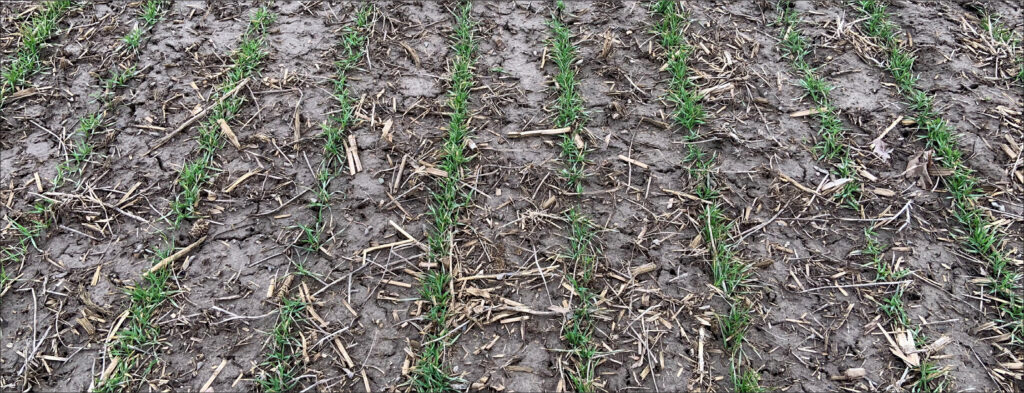
By contrast, the risk of lodging is greater in early planted fields with high seeding rates using a variety susceptible to lodging or too many tillers (Figure 5). In these fields, delaying an N application until GS30, and applying only a portion of total N, may reduce the risk for lodging by shortening the lower stem internodes and discouraging more tillers. The second application can then be made at GS32 or second node.
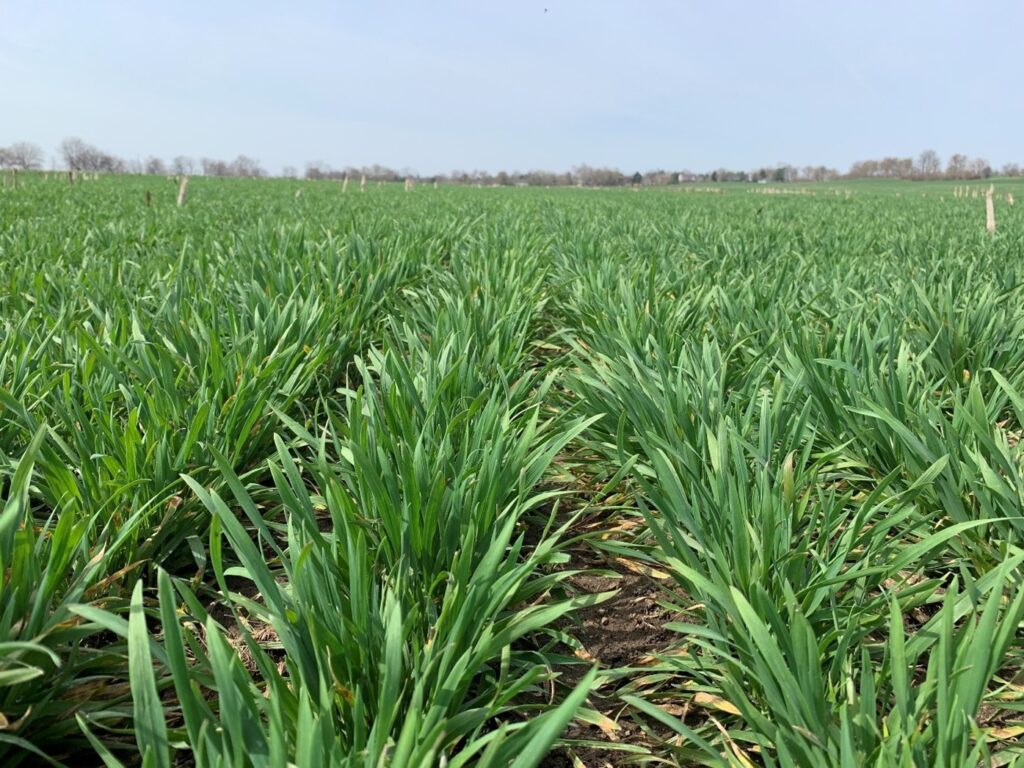
Other Field Specific Characteristics
Soil type is also an important factor to consider in your N management strategy. N losses through leaching and/or denitrification are more likely to occur with early-applied N on wheat before the onset of rapid N uptake (GS30). Potential N losses tend to be highest on sand and clay soils (less so for loam) but remember that losses are insignificant if rainfall after an N application is not excessive. Early N applications also enable an early application of S – an important factor on sandy soils or soils with low organic matter levels and no history of manure. Sulphur deficiencies tend to occur early in the growing season before soils warm up and mineralization begins.
References:
Growing-Degree Days and Development of the Wheat Plant
Should I split apply nitrogen in winter wheat? – Field Crop News
A Visual Guide to Wheat Staging
Historical Data – Climate – Environment and Climate Change Canada (weather.gc.ca)
Haun, J. R. (1973), Visual Quantification of Wheat Development. Agronomy Journal, 65: 116-119.
